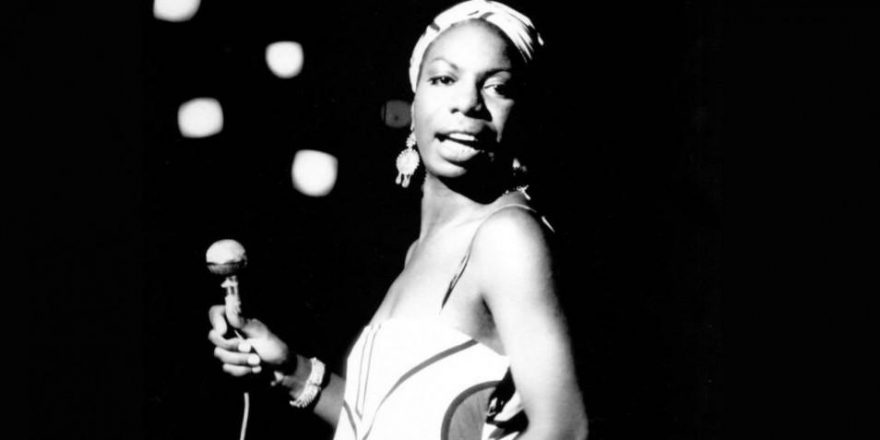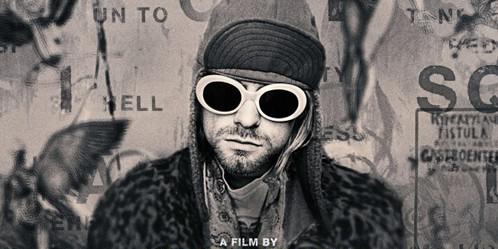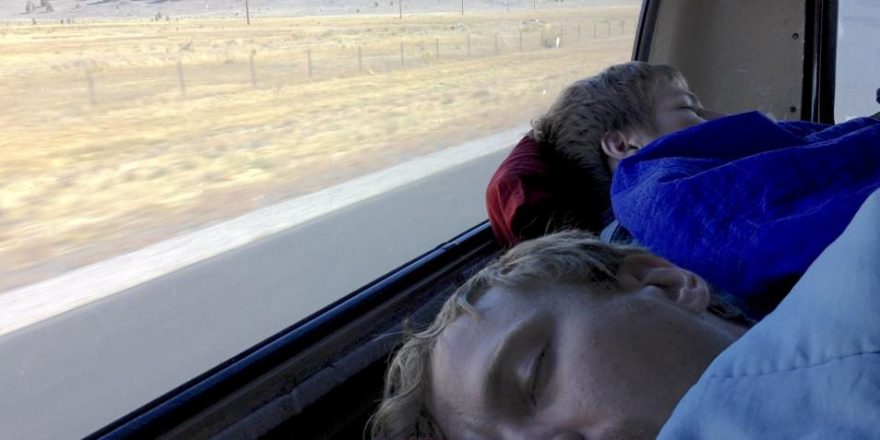There’s been a lot of digital ink spilled about Nina Simone lately, thanks to Liz Garbus’ documentary What Happened, Miss Simone?, and it’s been thrilling to see one of our greatest artists finally and fully get her due in the United States. More than any other American musician of the twentieth century, Simone absorbed the musical and social life of the entire country, distilled it and, on stage, held it in the palms of her hands; to see her at her peak is to see a performer contain multitudes. She summons an emotional honesty that’s terrifying in its authority even as it flickers between extremes, and it’s almost too much to bear; sometimes, watching her, I feel I’m looking into the sun. If you’re a musician, she has a way of making you want to go on, no matter what. Or give up.
It’s for precisely this reason that director Joel Gold’s 24-minute TV special, Nina, broadcast in 1970, is such a gift to those of us now slugging it out in the “nightclubs,” as she called them. Garbus’ film outlines Simone’s life and career beautifully, but it doesn’t really let us peer into the space I’m most curious about: the zone between her personal life and the stage, where she actually made her music. The hours spent in rehearsals, recording and waiting to go on stage, are where musicians live most of our performing lives, and some of the best scenes of Garbus’ documentary were lifted from Gold’s little scrapbook of a film, which catches Simone on the fly in 1968-69 in moments that will be reassuringly familiar to any working musician, or at least to this one.
At one point, we see her singing along to a tape of (her own?) piano track to “Pirate Jenny” in the vaguely German accent she used for her peerless versions of Kurt Weill’s songs, then laughing as she falters, saying, “Every time we get to the last one, which is the softest one of the whole thing…” and the film cuts. I wish I knew what she said next; I bet I’d be able to use it in a rehearsal when we’re beating a song to death instead of letting it flow. We also see her looking game but tired, running her band through “Ain’t Got No/I Got Life,” in what looks like a suburban living room; there’s no piano or vocal PA, so she plays a funny little mini-organ and sings over the guitar and bass as best she can (there’s no room in there for drums, so the drummer keeps time on a tambourine). It’s like watching her front a garage band, and it’s heartwarming. But I don’t think people know how often rehearsals are like this, even for bands you’d see in a big room. They’re nothing like the venue, the PA’s usually crappy, and you have almost no way to prepare for what it’s going to sound like until just before you go on.
Then there’s a recording session in a big RCA studio, where Simone’s face betrays a different kind of anxiety familiar to any working musician: the awareness of time and money going down the drain. She fidgets and paces between the control room and the tracking room; she pulls on a cigarette and clutches her collar; she furrows her brow and pores over a score with her arranger. “It’s very frustrating, at times,” she says, to no one in particular, “to find you’re not moving as fast as you’d like.” Back at the piano, she dives into a take of “Don’t You Pay Them No Mind” like she’s going to get it right come hell or high water. Who among us doesn’t know that feeling?
And then there’s pre-show nerves. I once asked a well-known singer if he still gets them; “Every time,” he said, which made me feel better about my own ritual of marking my exits. It’s inspiring, in the film, to see how Simone handles nerves — not her own, but those of her drummer Buck Clarke, who doesn’t quite have his bearings even though the show seems minutes away. Maybe his heart’s beating too fast, maybe she just rejiggered the set. Simone is calm and cool, an object lesson in how to lead a band: “When that show actually starts, Buck,” she says, fixing him with her gaze, “you keep your eyes on me. Right on me. Breathe with me, and you’ll be all right.”
I’ve often wondered why interviewers so often want to know about what music means, rather than what it is. (Moreover, if you could explain your music in words, why would you play it in the first place?) Simone seems to be wondering the same thing in Nina’s disjointed interview segment, which shows her seated on the floor, wrapped in a brown-and-black patterned gown. As she talks, you see the same mercurial cycling of emotions that marks her performances — she’s confiding, then incredulous, then delighted — and her smile, like her indignation, breaks out without warning. But you also see a musician preoccupied with the nuts and bolts of her craft as she struggles to answer abstract questions about it, like why she does it at all. “Music is all-encompassing,” she explains, at last, with a hint of weariness. “If you’re not performing, you’re dancing; if you’re not dancing, you’re composing…there’s just different levels of it to explore. My brain can’t conceive of getting away from music. That’s me.” Asked to define freedom, she balks, then gives the answer every true performer I’ve ever met might give: “I’ve had a couple of times on stage,” she says, her eyes widening, “when I really felt free. And that’s something else.”
I think it’s easy to misunderstand what she means by this. As an audience, we love the idea of the savant, the freak of nature for whom performance is easy as breathing. But most working musicians will tell you, at least after a few drinks, that this is a creature of myth, and Gold’s modest film, more than any other document of Nina Simone’s life, hints at the long, slow and painfully ordinary climb to her most extraordinary moments. “I want to give [my audience] a show, a real show,” she says, “that’s calculated from the beginning.”
This is the freedom she means: the kind that comes from the precise management of a thousand details. From learning songs well enough to transcend them. From learning the audience and the band well enough to forget them. From the endless rehearsals that were a pillar of Simone’s life since she was a little girl playing Bach on the piano. For all her legendary wildness, her secret seems to have been the secret of every performer: that only discipline, craft, and lonely days of hard work could let her soar above the music.
There’s a telling moment in the spellbinding live take of “I Wish I Knew How It Feels (to Be Free)” that ends both Gold’s film and the new documentary. Just as she’s about to launch herself into an ecstatic dance on the lip of the Village Gate’s stage, Nina turns toward the band — or is it the cameras? — and shouts “Easy, easy, EASY!” It’s hard to tell what’s wrong, but it’s clear that something in the room is messing with the energy she’s trying to bring to a climax, and she stamps out the distraction like a lit cigarette. Then she draws herself up with righteous fury and sing-shouts: “DON’T GET IN MY WAY!” — and the audience roars. Somehow, in that moment, she’s speaking for them, and they know it, and she knows they know it, and half a century away, it’s still as startling as a slap in the face. It’s a reminder of just how precious a moment of freedom in performance can be — and that nothing was going to stop her from grasping it. I think most musicians would admit that this feeling is why we submit to the demands of this crazy job in the first place, even if we can only imagine reaching Nina Simone’s heights of expression and abandon.
Earlier in the film, Simone says, “I’m wise enough to know that life doesn’t give us our dreams as we dream them. All I know is that force that’s inside of me is pushing me toward something.”
________________________
Correction: Nina was directed and photographed by Joel Gold. An earlier version of this article misidentified producer Peter Rodis as the director.








